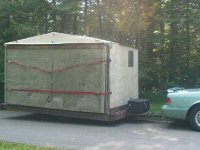glue vs epoxy
Moderator: eaglesdare
45 posts
• Page 3 of 3 • 1, 2, 3
I found an interesting comment in this quide to epoxying surfboards. At the bottom of page 10, in speaking about how to seal the EPS foam blanks, the author says that he doesn't remove the foam dust from sanding. He leaves it in place and adds a coat of epoxy. Apparently, the foam dust and epoxy mixture bonds better to the foam than an epoxy and micro balloon slurry.
http://www.foamez.com/pdfs/Epoxy%20EPS%20Construction%20Guide.pdf
http://www.foamez.com/pdfs/Epoxy%20EPS%20Construction%20Guide.pdf
-

aggie79 - Super Duper Lifetime Member
- Posts: 5405
- Images: 686
- Joined: Tue Aug 07, 2007 5:42 pm
- Location: Watauga, Texas
aggie79 wrote:I found an interesting comment in this quide to epoxying surfboards. At the bottom of page 10, in speaking about how to seal the EPS foam blanks, the author says that he doesn't remove the foam dust from sanding. He leaves it in place and adds a coat of epoxy. Apparently, the foam dust and epoxy mixture bonds better to the foam than an epoxy and micro balloon slurry.
http://www.foamez.com/pdfs/Epoxy%20EPS%20Construction%20Guide.pdf
Thanks, Tom
That is a lot of great info about foam. It looks like pre-sealing is the norm before laminating. I am surprised about using spackle for sealing. I am going to test several of these methods.
- Larry C
- 500 Club
- Posts: 732
- Images: 78
- Joined: Sun Dec 27, 2009 9:37 am
- Location: Finger Lakes

 Foam (EPS) actually comes in a few colors , Blue, Green , Pink , even white ... The more common “beaded foam is usually white , but can be Blue also ... “ a rose by any other name “ ...
Foam (EPS) actually comes in a few colors , Blue, Green , Pink , even white ... The more common “beaded foam is usually white , but can be Blue also ... “ a rose by any other name “ ... 






 .....joking anyone who sails is OK in my book
.....joking anyone who sails is OK in my book 